Vampires of the World

A vampire in European mythology was a corpse who rises from the grave and sucks blood from sleeping people in the guise of a bat. And what other vampires represented other nations?
Dahanavar (Ancient Armenian Mythology)

Dahanavar in the ancient Armenian mythology called a vampire, who lived in the mountains Ultish Alto-tem. He was generous to the inhabitants of his lands and never killed them, but he ruthlessly dealt with strangers, drinking their blood. There is a story allegedly written in 1854 by a certain baron August von Aksausen, who tells of two travelers who fell into the domain of Dahanavar. Knowing about the "tricks" of a vampire, the travelers fell asleep in such a way that their feet were put under each other's heads. Discouraged by the sight of a strange creature with two heads and no legs, Dahanavar left these parts, and nothing else was heard of.
Vetalah is a vampire-like evil spirit (India)
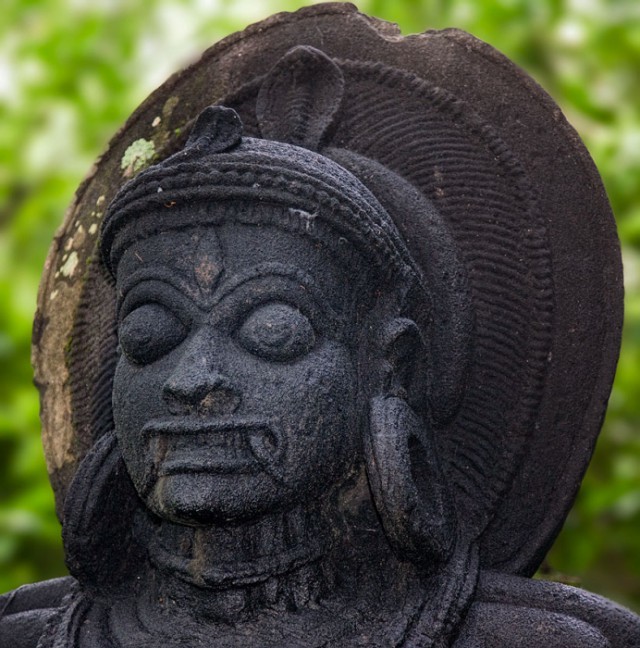
In Indian mythology, there are traditions about vetalas - vampire-like evil spirits included in the retinue of Lord Shiva. Vetals settle into the dead and force them to act like living beings. The corpse ceases to decompose and goes around the world like a zombie. All this vetalam is not necessary in order to feed on blood, brain and other organs of human flesh, but ... out of envy.
Chiangshi - ossified corpse (China)
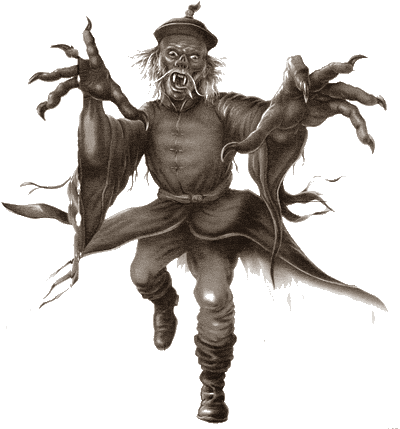
Translated from Chinese "chian-shi" means "ossified corpse." His nails are black, long and sharp, like a razor. They became such because Chiang Shi died and was buried a long time ago. The muscles and hands are also stiff, so the chian-shi walks, stretching his arms forward. The muscles of the feet after death have hardened, so the monster is difficult to walk. Chiangshi moves with strange jumps. It is said that the Chiangshi travel alone or in groups all over China, sometimes they have to go hundreds of miles to return to their hometown. Chiangshi, like zombies, are dead bodies that move and hunt humans. These creatures feed on blood and can not get enough. They kill people and drink the blood that flows out of them. The brain of the chian-shi has died, so they can not think, see and talk. They track their prey by smell or by breath. If you meet one of these monsters, you need to hold your breath, then you can get rid of it.
Lamia, empuzam and lemur (Rome)

In Rome, ghosts sucking blood were called lamia, empuzami and lemurs. Among them - the night bird Strix, nourished by human blood and flesh. It is from the name of this bird that the Romanian word Strigoi is formed, like the Albanian Striga. Although the myths themselves about these creatures are for the most part Slavic in origin.
Romanian "version" of the vampire
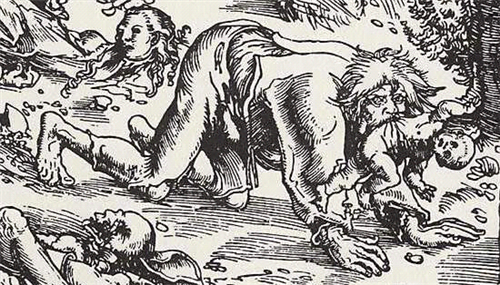
Already mentioned strigoi - Romanian "version" of a vampire. He looks like a ghoul, including the fact that he was born in a shirt or with some flaw, for example, with a tail or an extra nipple. In addition, he could have been born too early or die an "incorrect" death. Recognize the vampire for holes in the earth, an undeciphered corpse with a red face or the position of one of the feet, if it is in the corner of the coffin. Therefore, the graves were often discovered (for example, after the death of the child for another three years), so that you can check the deceased for a propensity for vampirism.
The Caligan Vampire

The most famous vampire-like creature among the gypsies is called Kali. In fact, this is an Indian deity with fangs, hung with garlands of corpses and skulls and having four hands. The temples of Kali are located near the places where they perform cremation.
Empus is a man with donkey's legs (Greece)

Empus - a man with donkey's legs - walked on the roads, attacking late travelers, but never went into houses. Lamia is a woman with a body covered with snake skin, and goat hooves on her legs. She was interested only in children. The reason is. That she herself was once the queen of Libya and the mother of a large family. But her children died all the time in an epidemic, and inconsolable Lamia cursed the gods and the entire human race. Angry gods turned a beautiful queen into a monster. Since then, Lamia every night goes hunting, kidnaps children and drinks their blood.
Kappa the Vampire (Japan)
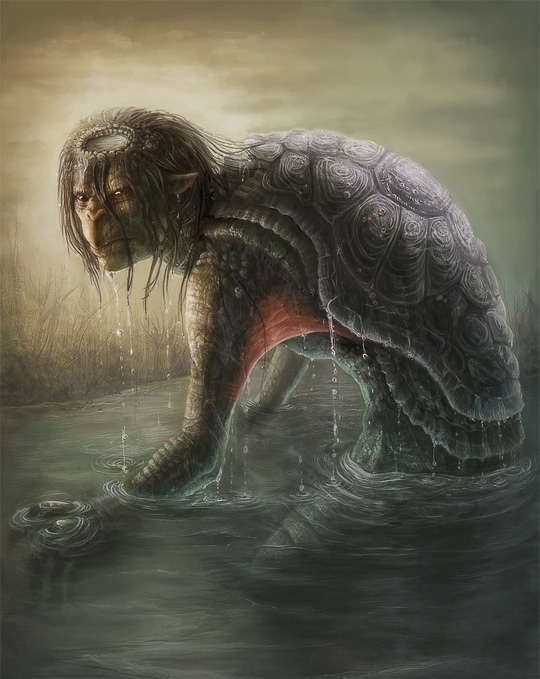
Kappa - a vampire, living in the water. The drowned children became ducks. They were covered with green skin, they had webbing between their fingers and a tortoise shell on their backs. Several rows of sharp teeth appeared in the mouth. Kappa's legs dragged the swimmers to the bottom and drank blood, biting the veins under the knee or through the anus.
Aswanga - being (Philippines)

Aswanga is a creature into which a murdered young girl is preached. In the afternoon, the Aswangas look like beautiful girls with flowing hair, in flowers wreaths. They lure young hunters and children into the forest thicket, where the rays of the sun do not fall, where they bind their victim with creepers and drink its blood. At night, Aswangs turn into large black birds. They sit on the roof of houses and run a long and hollow tongue, like a proboscis at a mosquito, into the chimney. With this tongue they pierce the veins of sleepers and suck their blood.
Gul is an unpleasant creature (the Arabian Peninsula)
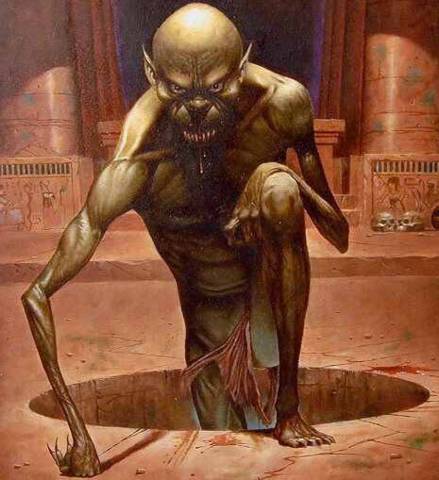
Gul is an unpleasant creature, into which a black sorcerer turns after death. In the afternoon ghouls hide in dark caves and clefts of rocks and at night go out to hunt. It attacks travelers, tears their throats and drinks blood. If you manage to catch a child, he will eat it, leaving only bones. If the ghoul is not lucky in the hunt, he does not sneer at digging a corpse out of the grave and gnawing off a hefty piece.
Tlahuelpucci (Central America)
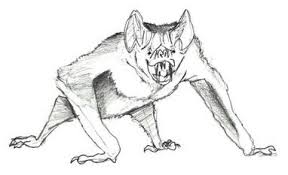
Along with the "classical" vampires, there are also Tlahuelpucci. Unlike the "undead", the Tlahuyulpu are quite even alive. They are born in families, leading their race from the priests of ancient bloody cults. The thirst for blood manifests itself at the age of thirteen. Blood is required from one to four times a month. On the hunt, the Tlahuelbuchi fly out in the form of a giant bat. What is characteristic, all the victims of Tlahuelpushes must perish - the vampire drinks all the blood to a drop.
Ghoul (Slavic)

If you believe the Slavic myths, ghouls (vampires called vampires "with a light hand" Pushkin, who wrote in 1836 the same poem) could be anyone who was born in a "shirt", with teeth and a tail, who was conceived on certain days, who Died an "incorrect" (unnatural, premature) death, who was excommunicated and who had committed the wrong funeral rites. In order for the deceased not to become a vampire, it was necessary to put a crucifix in his coffin, and under his chin - an object (so that the dead man did not eat the funeral shroud). You could still nail the clothes of the deceased to the coffin or put the sawdust there. It is believed that vampires are terribly fond of recounting something, so while the awakened dead recounts each of these sawdust, he simply dies. In addition to this, you can pierce the body of a dead person with thorns or stakes (hence the tradition of driving a stake into the grave), thus nailing it to the ground. Another true and well-known remedy against vampires is garlic.
GERMANY AND VAMPIRS
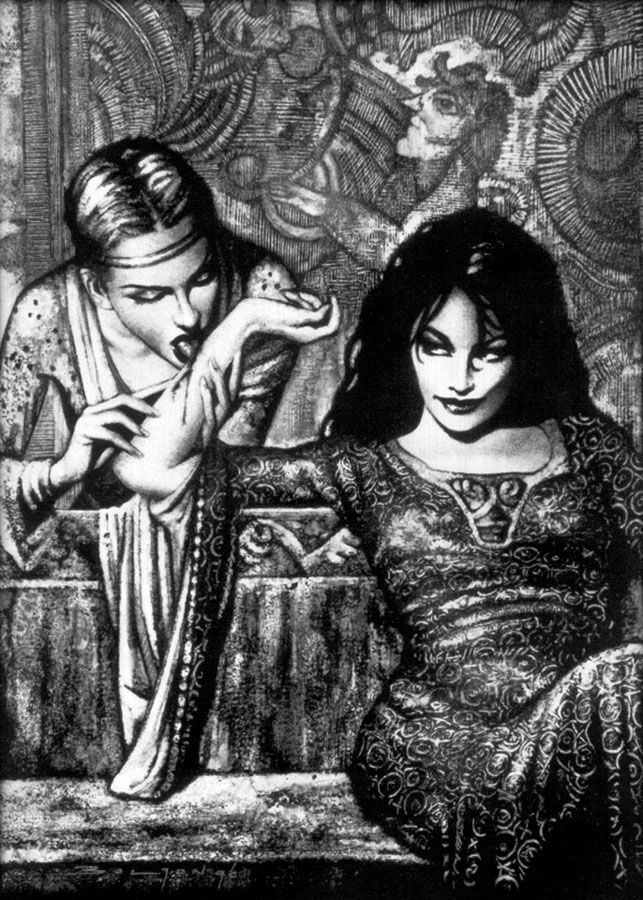
Just like among the Slavic peoples of Eastern Europe, vampires have a long history in Germany, and the German vampire is very much like a Slavic vampire. By the 10th century, the Slavic expansion reached the lands along the Yates River and swept the eastern part of Germany. The Slavic and German parodies mixed up. Their myths also mixed. Thus, the mythical vampire of these peoples has acquired many similarities. The best-known of the German vampires was Nachtzer, or "the night kidnapper," a vampire in northern Germany. Equivalent to him in southern Germany (Bavaria) was blutzager, literally "bloodsucker". This term in common speech called unpleasant people. In literary sources, the vampire appears under the names "nachttoter", "knight of the night", "nootter" or "killer of nine". Like the Slavic vampire, Nachtzerer was again returned (recently deceased, returning from the grave to attack the living, usually a family and acquaintances).
Just like the Slavic vampire, Nachtserere was born with unusual circumstances accompanying death. A person who died suddenly as a result of suicide or accident was a candidate for vampires. Like venesski in Poland, a child born in a cap (a membrane that covered the face of some children) was sentenced to become a vampire, especially if this cap was red. Nachtzerer also associated with epidemic diseases. When a group of people died from the same disease, the observers often recognized the one who died first, the cause of the death of the others. There was a belief that if you do not remove the name of a person from the funeral clothing, then he will return as a vampire.
The Nachtzeras were known to have a habit of chewing their own limbs in the grave (a belief probably stemming from the fact that they found bodies that were victims of predators after burial in shallow graves without a coffin). So, their faces were untouched, and the hands and other limbs were missing or torn. The vampire's activity in the grave continued until he stopped eating his own body and his clothes. Then the vampire rose and, like a ghoul, ate the bodies of others, often in the company of a woman who died during childbirth. Their activity could be identified by the sucking sound that was attributed to the woman feeding the baby. When their coffins (those who were sufficiently wealthy buried in one) were opened, the nachtzerers were found lying in puddles of blood, because the vampires were blotting themselves out to such an extent that they could not retain in themselves all the blood they used.
To protect themselves from the attack of a vampire, people took various measures. Some put a lump of earth under the vampire's chin, others - a coin or a stone in his mouth, while others tightly tied a handkerchief around their necks. In the most extreme cases, people cut off a head to a potential nachtzerer and stuck a spoke in his mouth to attach the head to the ground or to fix the tongue.
Some faith in the vampire has survived in rural Germany. Affons Schweigert explored the bloatswagher in Bavaria in the 80s. He found that believing in a vampire not only continues to exist, but that there are also some unique aspects of this faith. Outwardly, the blutzager was pale and described like a zombie. In Bavarian folklore, people became vampires because they were not baptized (Bavaria - part of Germany where the Roman Catholic church was in charge), engaged in witchcraft and goals, immoral lifestyle or committed suicide. They could also become vampires by eating meat or eating an animal that was killed by a wolf. During the burial, if the animal jumped over the grave, it could also lead to the return of the deceased as a vampire. The same outcome was the case when a nun approached the grave.
If there was a blatzager in the community, the residents were advised to stay at home at night and coat the doors and windows with garlic, and haw the hawthorn around the house. If someone had a black dog, it was necessary to watch her, draw on her another pair of eyes, from which the vampire would run. To finally kill a vampire, they advised him to pierce his heart with a stake, and put garlic in his mouth.
Beliefs and customs about vampires in Germany and Eastern Europe became the subject of several books in the 17th century (although no one used the term "vampire" in these texts). Notable works were: De Masticatione Mortuorum (1679) by Philip Rore, who discussed the habits of Nachtzer, and De Miraculis Mortuorum by Christian Frederick Garman (1670). At the beginning of the 18th century, a whole stream of reports on vampires from Eastern Europe began to leak into Germany. An active debate in the universities has flared up. Although Germany was not able to avoid vampiric hysteria (its epidemics were recorded in East Prussia in 1710, 1721 and 1750), the vampire problem seems to have originated from the widespread newspaper reports about the investigation of vampirism in Serbia in 1725 and, in particular, The investigation of the Arnold Paul case in 1731-1732. The popularized version of Arnold Paul's case became a bestseller at the book fair in Leipzig in 1732.
Arnold Paul (or Paole) was the hero of one of the most famous vampiric incidents in the XVIII century. It arose in the midst of a wave of vampire attacks that swept through central Europe from the late 17th century to the middle of the next century. These cases in general and the case of Paul in particular, were the main reason for the lively interest in vampires in England and France in the early 19th century.
Paul was born in early 1700 in Bear, in the region of Serbia, located north of Belgrade, which later became part of the Austrian Empire. He served in the army in those parts that were called "Turkish Serbia", and in the spring of 1727 returned to his hometown. Paul bought several acres of land and settled on it, leading a farm. He liked a young woman from a neighboring farm, was engaged and was about to marry. He was good-tempered, honest, and the townspeople welcomed him gladly on his return. However, in his personality a certain gloom prevailed. Finally, Paul told his betrothed that his problem was connected with the war. In Turkish Serbia, he was attacked by a vampire. In the end, he killed a vampire, following him to his grave. He also ate a little earth from the vampire's grave and washed his wounds with the vampire's blood to purify himself of the impact of his attack. However, he is still in awe of being "spoiled" by this attack. A week later, Paul was the victim of an accident that led to his death. He was immediately buried.
Three weeks after his funeral, reports of the appearance of Paul spread. Four of the people who reported this died, and the public was panic-stricken. Community leaders, in order to suppress panic, decided to act. On the 40th day after the funeral, the grave was opened. Two military surgeons attended the exhumation. They made a conclusion about the unnatural decomposition of the body - the body looked as if it had just died. It seemed that under the old skin there is a new one, and the nails continued to grow. The body was punctured, and blood rushed from it. Those who were present decided that Paul was a vampire. When piercing, he gave a loud groan. Paul's head was cut off, and the body was burned. But they did not finish it. Those four who died telling that they saw Paul were subjected to the same ritual in order to avoid their return as vampires.
In 1731, in the same area, about 17 people died of vampirism symptoms within three months. The townspeople hesitated with action until one girl complained that a man named Milo, who had recently died, attacked her not in the middle of the night. The news of the second wave of vampirism reached Vienna, and the Austrian emperor ordered an investigation into the regimental field surgeon Johannes Flakerer. Appointed December 12, Flakerer went to the Bear to collect evidence of eyewitnesses. Milo's body was dug up and found that it was in the same state as Arnold Paul's body. The body was pierced, and then burned. How is it possible that vampirism, which was eradicated in 1727, returned again? It was found that Paul infected several cows. By order of Fluckinger, the townspeople continued to dig out the bodies of all those who had died during the last months. Forty of them decayed, and 17 were in the same condition as Paul's body. All of them were pierced with stakes and burnt.
Flakerer wrote a full report on his activities, which he presented to the emperor in early 1732. Soon his report was published and became a bestseller. By March 1732, reports of Paul and the vampires of Medvezhye went to periodicals in France and England. Thanks to the status of documentary evidence, they became the object of future studies and reflections on vampires, and Arnold Paul became the most "famous" vampire of the era. Paul's case was the starting point in the studies of the House of Augustine Calme and Giuseppe Davanzati - two Roman Catholic scholastics who prepared books on vampirism in the middle of the same century. (Based on the materials of JG Malton "Encyclopedia of Vampires").
USA AND VAMPIRS
In the spring of 1866 in the waters of the Indian Ocean, the Atlantic vessel sailed in search of whales. It was a fairly large whale with a displacement of 290 tons.
A team of 30 people was engaged in the usual work on cleaning and binding the whalebone and preparing barrels for fat. AND....
May 23 was a sunny day and a light breeze was blowing. A coke named James Brown cleaned the frying pan while sitting on the deck. The twenty-five-year-old Portuguese was of short stature, but of an athletic build with thick dark hair and brown eyes. His body was covered in abundance with tattoos in the form of anchors, eagles, hearts pierced by an arrow. It often happened that the sailors scolded and even fought among themselves. This was the usual thing, because the ship went into the sea for a year and the sailors were able to bore each other to death. So on this day James Foster, stepping onto the deck, tongue-tied Brown. A fight broke out. No one even tried to separate them. Foster pulled out his knife and wounded the coca in his chest. Only after that, James Gardner and John Soares working side by side separated the fighters and dragged the wounded Brown into the cockpit. Fortunately, the wound was shallow and soon the cook again was able to begin his duties.
Once, two sailors, Foster and Gardner, disappeared on the ship. They were not seen on deck and they did not leave for dinner either. Late in the evening the whole team began to look for them. Captain Benjamin Wing, taking the lantern, went down into the hold, where the finished products were stored - barrels of whale oil and bundles of whalebone. The terrible picture terrified him - Brown leaned over Gardner's lifeless body and eagerly sucked blood from a wound in his throat. Beside me lay Foster's dead body ... completely bloodless.
The captain ordered the sailors to seize Braun, who proved to be very strong, and the team had to work hard to tie him up and lock him in the closet. When examined on the bodies of the victims, they found huge wounds in the neck made with a knife, and it became obvious that James Brown sucked blood from them! The captain forcibly pacified the sailors, ready to throw the vampire overboard. The whaler "Atlantic" took a course to the native port of Boston.
The trial of the vampire took place on November 13, 1866, in which James Brown was found guilty of a double premeditated murder. During the process he was calm, without saying a word in his defense. The court pronounced a verdict: the death penalty by hanging, but on January 3, 1867, received a pardon from US President Johnson, who replaced the sentence with life imprisonment. Brown was imprisoned in Charleston prison for a long 22 years.
The prison, which is a gloomy granite building, was in Massachusetts. It was not possible to escape from there. Chambers with high ceilings had small windows, from where prisoners could only see a piece of the sky. The courtyard, where prisoners were sometimes taken out for life, was surrounded by high walls.
At first, Brown was placed in a common cell, but because of constant fights with his cellmates, he was transferred alone. Somehow for a day he had to add a robber and a murderer, also sentenced to a life sentence. Brown dealt with a fraudulent criminal, and as well as with sailors from the Atlantic, sucking the victim's blood. The vampire was again tried, so he received another life sentence.
Brown gave a lot of trouble to the guards and in 1889 he was sent to an even more strict and better guarded prison in Ohio. But even here the vampire did not miss the moment to attack the guards. His violent behavior, fits of rage, attempts to grab any teeth in the throat, proved that the prisoner moved with the mind. On this basis, he was transferred to the madhouse of Washington. After about him nothing is known, it is believed that there he died. However, in the archive for no apparent reason, there is no record of the death of James Brown.
At that time, American newspapers were full of headlines about Brown as a real vampire, who was deprived in prison of the opportunity to drink blood that served him as food, and so he went insane.
The real case of vampirism was recorded in Rhode Island in 1892. Interestingly, the vampire from Exeter was also called Brown, only George. Newspapers wrote that his family - his wife and two adult daughters suddenly died. The reasons for their death were not established, so after some time it was decided to exhume bodies buried in the local cemetery. On March 17, a specially established commission stated the death of Nineteen-year-old daughter Hilda from bleeding, as evidenced by red marks from bites on the girl's neck, and, who died two months ago, did not decompose at all. Against George Brown were going to start a criminal case on the fact of killing their relatives. But, without waiting for the arrest, the vampire disappeared without a trace. It remains a mystery how he did it, because his guard was on duty at his house.
The stories of vampires with the same name have been recounted hundreds of times in print media. On the American continent, more and more often there were notes that some people show pathology - a desire to drink human blood. Similar distortions were studied by the Austrian psychiatrist Richard von Kraft-Ebing, who attributed them to the category of sexual disorders.


Comments
Commenting on, remember that the content and tone of your message can hurt the feelings of real people, show respect and tolerance to your interlocutors even if you do not share their opinion, your behavior in the conditions of freedom of expression and anonymity provided by the Internet, changes Not only virtual, but also the real world. All comments are hidden from the index, spam is controlled.